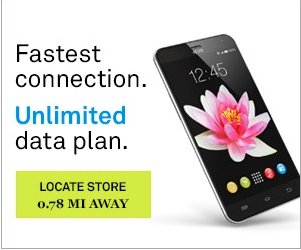
Increasingly, mobile isn’t just consumers’ first choice for media, but their only choice. Consider that 61% of Gen Z consumers believe watching videos on a phone is “as good as watching TV.” And, according to recent research from Zenith, consumers are expected to increase their mobile internet usage to 930 hours a year by 2021, compared with 800 hours this year.
“Media now means comparing prices on the high street, sharing jokes with friends and booking your next holiday, opening up new opportunities for brands to connect with consumers,” said Jonathan Barnard, Head of Forecasting with Zenith.
Mobile ad spend is increasing too, with US advertiser spending on pace to reach two-thirds of their digital budgets this year—of which $16.41 billion is expected to go to mobile video advertising (45.6% of total digital video ad spend).
If you’re thinking it’s time to invest more resources into getting your mobile creative on point, you’re absolutely right. With mobile, it’s really easy to rely on data and targeting strategies to meet business needs instead of creating high-quality mobile ads that truly resonate with audiences.
We spoke with UnSun Lee, VP Global Creative, GroundTruth and learned seven ways mobile advertising could become more interesting, relevant and effective. These seven best practices hold just as true for publishers with their own in-house studios or who develop house or native ads as it does for brands working alongside agency partners—and especially in the realm of programmatic creative.
1. Keep Your File Size and Copy as Light as Possible
Lynne d Johnson: We hear a lot about latency being a killer to user experience (UX) when it comes to mobile advertising, especially once you throw programmatic into the mix. What should publishers and their agency partners focus on to make sure people are paying attention?
UnSun Lee: Mobile user attention span is short—there’s always the risk of distraction and interruptions from the outside world as consumers commute, stand in line, or simply kill time on their phones—so it’s important that your ads load quickly. All publishers prioritize their own content to load first and ads are the last item on a page to load, so it’s important to keep those file sizes small.
Speed is an issue with ad exposure, too. It takes consumers about 400 milliseconds to react to a mobile ad. Are your ads equipped to pique their interest? We know that ads with copy that are five words or fewer perform 67% better when it comes to visitation rates. In other words, keep messages short and sweet and let the visuals do the talking.
2. Add Images to Increase Engagement
LdJ: So, it looks like less words mean more if agencies and publishers are looking to optimize creative for better performance—and higher engagement. Is that correct?
UL: Yes, that is true. Studies showit only takes 13 milliseconds for our brains to process an image. Neuroscientists at MIT found that subjects were able to see new images “more than 20 times as fast as vision typically absorbs information.”
The right creative image can mean the difference between an ad that’s overlooked and one that incites a consumer. The visuals you choose will, of course, depend on the nature of the messaging and campaign objectives, but one thing’s for sure: Including a human or product image performs 55% higher in visitation rate than not having any image at all.
With this in mind, it’s best to pick a picture that’s more likely to intrigue potential customers.
3. Always Include a Call to Action
LdJ:Given that no one in the industry agrees on how to measure viewability, shouldn’t mobile ad creative do more than just cause a user to look at an ad?
UL: Of course, you’re going to want your users to be engaged with your advertisers’ ads. We all know the value of a strong call to action—yet not all mobile ads include this key component. Featuring a CTA with the words “buy now” improves visitation rate performance by 51% over the average, so depending on what you want the user’s next move to be—watch a video, learn more, and so on—you always need to encourage them to take action. This is something that publishers, advertisers and agencies all need to be thinking about.
4. Spice up Creative With GIF Animations
LdJ:But it’s not always so easy to get people to click on ads nowadays. Are there any special creative tactics that should be considered?
UL:Sure. According to GroundTruth data, adding a subtle GIF animation improves Click-Through Rate (CTR) performance by 25%. What’s more, it boosts visitation rates by 44%. Even a simple animation has what it takes to help your ad stand out.
Just because most mobile ads are simple in nature, that doesn’t mean they have to be boring. Whether you pronounce it “gif” or “jif” — we’ll save an argument about the merits of each for another article — GIF animations should be on your radar during the ad design process.
5. Use Location as a Traffic Driver
LdJ: Everyone knows that one of the greatest advantages that mobile ads have over desktop is location targeting, especially when it comes to driving foot traffic. At GroundTruth, you did some research that highlights how certain creative considerations that use location data prove this, right?
UL: Right, our research shows that including dynamic distance overlay to the nearest store improves visitation rates by 53%, so leveraging that physical data is key for marketing.
When a mobile user is mere steps away from a store that offers products relevant to their current wants and needs, they can make a visit without disrupting their day—and you can make it easier for them by providing directions on the creative.
Create a seamless message by combining the distance overlay with branded copy. For example: “Dinner is just 1.23 miles away.” Be sure to make the font as large as possible too, as this will make it legible at a glance.
6. Deploy Ads at Opportune Times
LdJ: Are mobile ads like social media posts—are there certain times of day when they perform better?
UL: Devising a successful mobile ad campaign isn’t just about what the ad looks like and where it’s placed, but also when it’s received. Our data shows ad engagement is at its highest at 2 PM on Saturdays. This type of information can help you understand the right days and times to run your campaigns. But it’s also important to use logic too.
If you’re trying to help your advertising partner promote Black Friday sales, then you won’t want to wait until the weekend.
7. Target Audiences With Personalized Messages
LdJ: We’ve been hearing a lot of ruminations about the death of the cookie and the rebirth of context. This means that publishers (and advertisers) will have to do a better job at leveraging their first-party data. Also, impending 5G networks will enable greater personalization. What should publishers and agencies be thinking about when it comes to helping their advertising partners with mobile ad personalization?
UL: Well, personalized ads definitely produce results. Recent research shows 44% of consumers will consider switching to a brand that does a better job of personalizing its marketing communications, and 90% say messages that aren’t personalized are “annoying.”
It’s easy enough to create two different versions of an ad that speak to two different audiences, like these examples targeting millennials and parents. Doing so stands to improve response rates and create a more appealing ad experience.
Make Your Mobile Ads Suck Less
Publishers who don’t think of themselves as being in the creative business might think these practices don’t apply to them, but as programmatic becomes the norm, it’s become increasingly important to monitor your mobile ads for content, placement and quality. That is unless you want to turn your users away. The quality and delivery of ad creative have a huge impact on the effectiveness of campaigns, so use these seven best practices to your advantage. Not only will they improve your campaign performance, but your audience will appreciate your more engaging and relevant ads.






